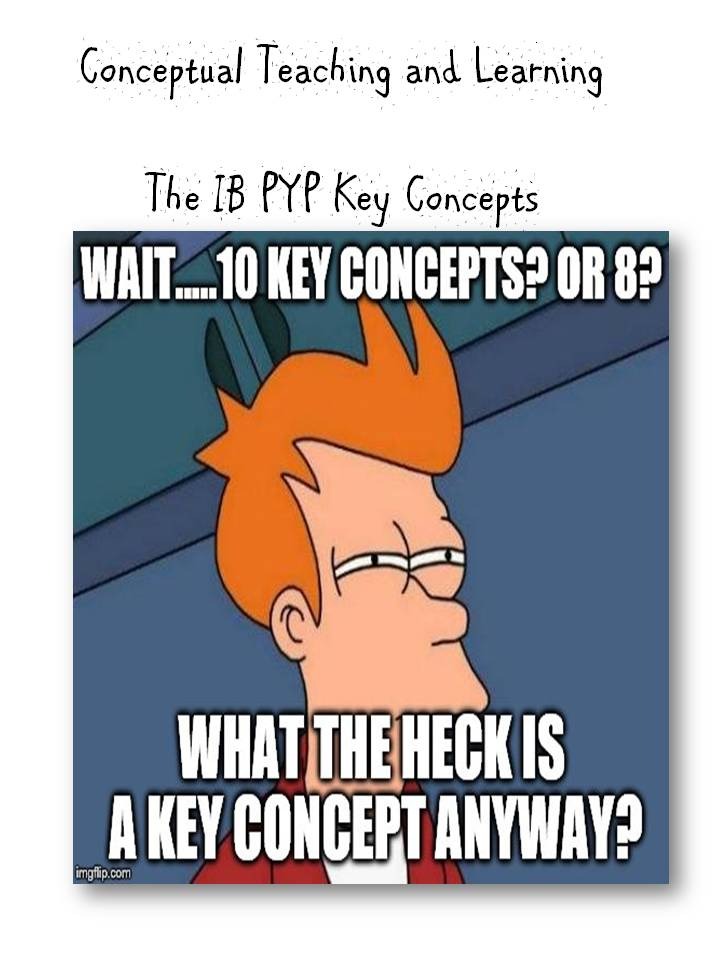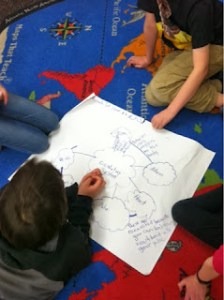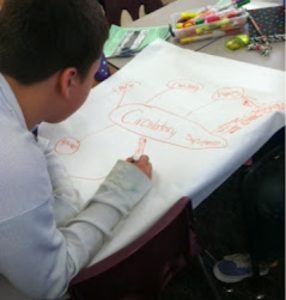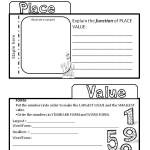Using the IB PYP Key Concepts


What is A Key Concept?
I was asked recent to show a few of our teachers how I incorporate the key concepts into everyday learning. I felt that there may be a few more of you out there who’d also be interested. So, here we go.
The IB PYP now has 7 key concepts that are designed as the lens or the “big picture”of which we look at our lines of inquiry within each of our six units of inquiry. ( 4 units for EYP)
| “Making the PYP Happen”,a guide written by the IBO, is in constant use as I often return to it for reference and reminders. Very dog eared! |
Developing Conceptual Thinkers: Begin with the QuestionsTo begin with, an activity that helps the children to think conceptually, brings them to the very basics of the key concepts and to the questions that are connected with each concept. These are commonly found on your classroom posters that are displayed with each PYP classroom.
 The pictures that draw their attention are then cut out and glued into notebooks with their question or observation noted, They then have to categorise their thinking under the heading of each key concept. The thinking becomes much deeper than you would ordinarily expect to begin with. It is GREAT to reflect afterwards as the children share their thinking and the process of their thoughts. I like to have the children share under our document camera. It becomes particularly fun when we chat about the different perspectives. Reinforcing a great key concept already!
The pictures that draw their attention are then cut out and glued into notebooks with their question or observation noted, They then have to categorise their thinking under the heading of each key concept. The thinking becomes much deeper than you would ordinarily expect to begin with. It is GREAT to reflect afterwards as the children share their thinking and the process of their thoughts. I like to have the children share under our document camera. It becomes particularly fun when we chat about the different perspectives. Reinforcing a great key concept already! CONCEPT MAPS: Inquiry is a process.
As the children progress with their inquiry based thinking skills, introduce them to concept maps. These vary in form depending join the level that you re teaching. I have included a picture of my fifth graders using concept maps as a means to focus our thinking toward the key concepts that we would be including in our new unit.

This was a provocation used to build connection between the big ideas and the new vocabulary.

| Example of my math flip flap books, reinforcing the concepts within math, |
Extend this with new spelling or vocabulary words. Have the children work in collaborative groups with a selection of 3-4 words.
 Then, differentiating the words and the key concepts , let them make their connections between the words and the concpets that you have given them. I use this often at the beginning of our units and as we progress, so that they kids can add to their thinking and SEE how they have grown with their thinking. Often, the children CHANGE their thinking based upon the new knowledge that they have gained.
Then, differentiating the words and the key concepts , let them make their connections between the words and the concpets that you have given them. I use this often at the beginning of our units and as we progress, so that they kids can add to their thinking and SEE how they have grown with their thinking. Often, the children CHANGE their thinking based upon the new knowledge that they have gained.
Please let me know if you have any specific questions that you’d like me to cover in the future.

